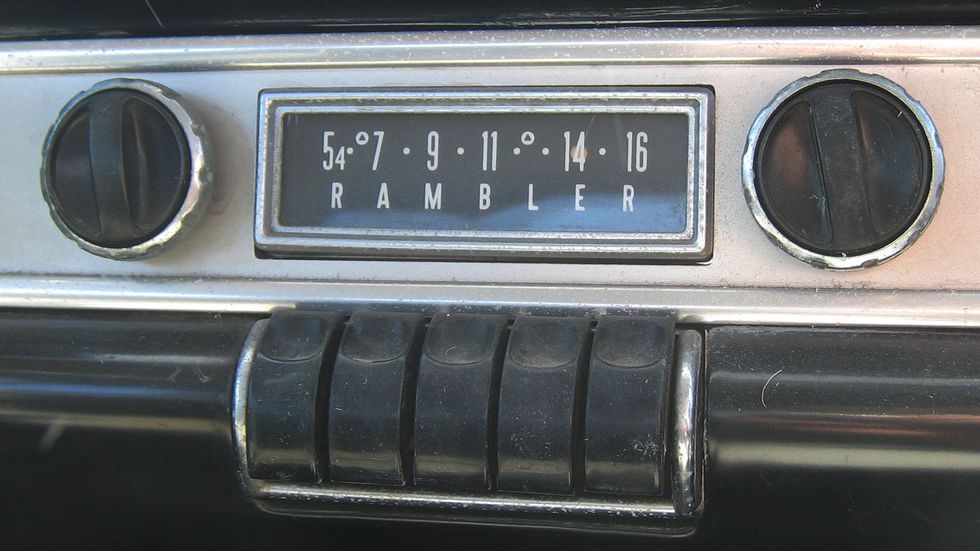Illuminating History
December 21, 2021
"You're the historian. You should know that."
I get that a lot. In this case, if we were talking about Nixon’s domestic policy, Truman’s decision to use the atomic bomb, or the Iranian hostage crisis, I might have agreed. Instead, we were talking about decorating the outside of the house for the holidays, and someone asked, “How did the tradition of hanging Christmas lights begin?" I didn’t have a clue. But I took this as an academic challenge and did a little research.

Photo Credit: Canva Photos
The original Christmas lights were candles. Although festive, they were a fire hazard. In 1882, Edward Johnson, the business partner of lightbulb inventor Thomas Edison, hand-wired some colored bulbs and wrapped them around a tree. After Edison sold the light bulb to General Electric in 1890, they began to market the Christmas light. President Grover Cleveland was the first to put electric lights on the White House tree in 1894, and by 1900 the first advertisements for Christmas lights appeared. In the early 1900s the lights migrated from the tree to outside. Most Americans were still without electricity, so it took a while for the idea to catch on. In 1917, Albert Sadacca, a Christmas light salesman, created the device that allowed several strands to be connected. Most homes had electricity outside of rural areas by the 1930s, and GE increased their Christmas lights marketing. As costs decreased and incomes rose after World War II, more people lit up their homes and yards. The lights were mostly the glass candle-like multicolored bulbs, but other styles of lights appeared on the scene, like Bubble Lights. Then, in the 1970s, the mini-light was introduced. Design and technology advancements followed, and today we have a variety of inflatable lawn decorations and LED computerized light shows.
My research didn't turn up anything on the history of families driving around town to look at lights, but I assume it parallels the history of the mass production of the automobile.
Growing up it was a holiday tradition in our house for my parents to load my sister and me into the family car and drive around town to check out the lights. Just like today, the displays varied, from those whose houses were dark or sported a single strand around a door or window to those who nailed lights to every edge of the house and wrapped every single piece of vegetation, ala Clark Griswold in National Lampoon’s Christmas Vacation. My father’s response to these garish displays was to say, “I’d hate to see their electric bill.” To that end, the one piece of Christmas light history I was familiar with was President Nixon’s ask during the 1973 energy crisis that people refrain from stringing outdoor lights. We still took our annual holiday drive that year, not so much to enjoy the lights, but to see who in town stood in defiance against our Watergate embattled president and, in my father’s opinion, was "wasting electricity."
Chris and I have always done some level of outdoor lighting. We divide the decorating duties. She does the inside, and I'm responsible for the outside. For many years I enhanced the traditional lights with various lawn decorations. Until we moved to the Midwest. Our first Christmas in Illinois my decorative Santa sleigh and reindeer mimicked the legend himself and took flight during heavy winds. I don’t think they circled the globe like Saint Nick and his team, but I never found them. I imagined someone a few towns over waking up to find a mess of tangled metal wire, tinsel, and strands of light balled up in their front yard. It was heavily anchored light strands only after that.
For a couple of years I went with the spotlights that sprayed lights across the front of the house. I tried to convince my wife, who wasn't a fan of the rotating red and green dots, that we were high-tech. She thought I was lazy. I did like the lights, but I have to admit, it was a welcome break from the annual Christmas decoration dance routine. Untangling yards of lights and then wrapping, winding, and draping them through the trees and bushes. Climbing up and down ladders, stretching across limbs and branches, and making countless trips to and from the garage and basement storage area. Tormented by fickle bulbs, loose connections, microscopic fuses, and strands that sometimes lit, sometimes blinked, or sometimes mocked me by staying dark. The neighbors liked the laser lights if only because those years they didn’t have to keep their children inside on decorating day to shield them from my spewing obscenities more appropriate on the deck of a cargo ship than the front yard of a suburban home.
We also continued the tradition of driving around town looking at lights. After the kids moved out, Chris and I still took the annual tour. A couple of weeks ago we took our grandson Carter for dinner, and during the ride, he spotted some outdoor decorations and said, “I like the moving lights.” He pointed to a laser light display of red and green dots moving across the front of a house. I couldn’t help but laugh. Chris wasn’t as amused.
This weekend he spent the night with us, so we decided to take him on a light tour. As we backed down the driveway, he noticed a new addition to my outdoor light display. I spliced it in that afternoon without telling Chris. Although tempted, I skipped the rotating reds and greens and went for a variety of bright white snowflakes. Carter exclaimed, "Look, moving lights!" To her credit, Chris said it wasn’t “bad.”
Does anyone know when the tradition of using your grandson as an excuse to do something your wife doesn’t want to began?
I know. I’m a historian. I should know that.
Like what you read?
Subscribe to my mailing list and get notifications to your inbox when my next blog post goes live.
Contact Us
More By Joe


